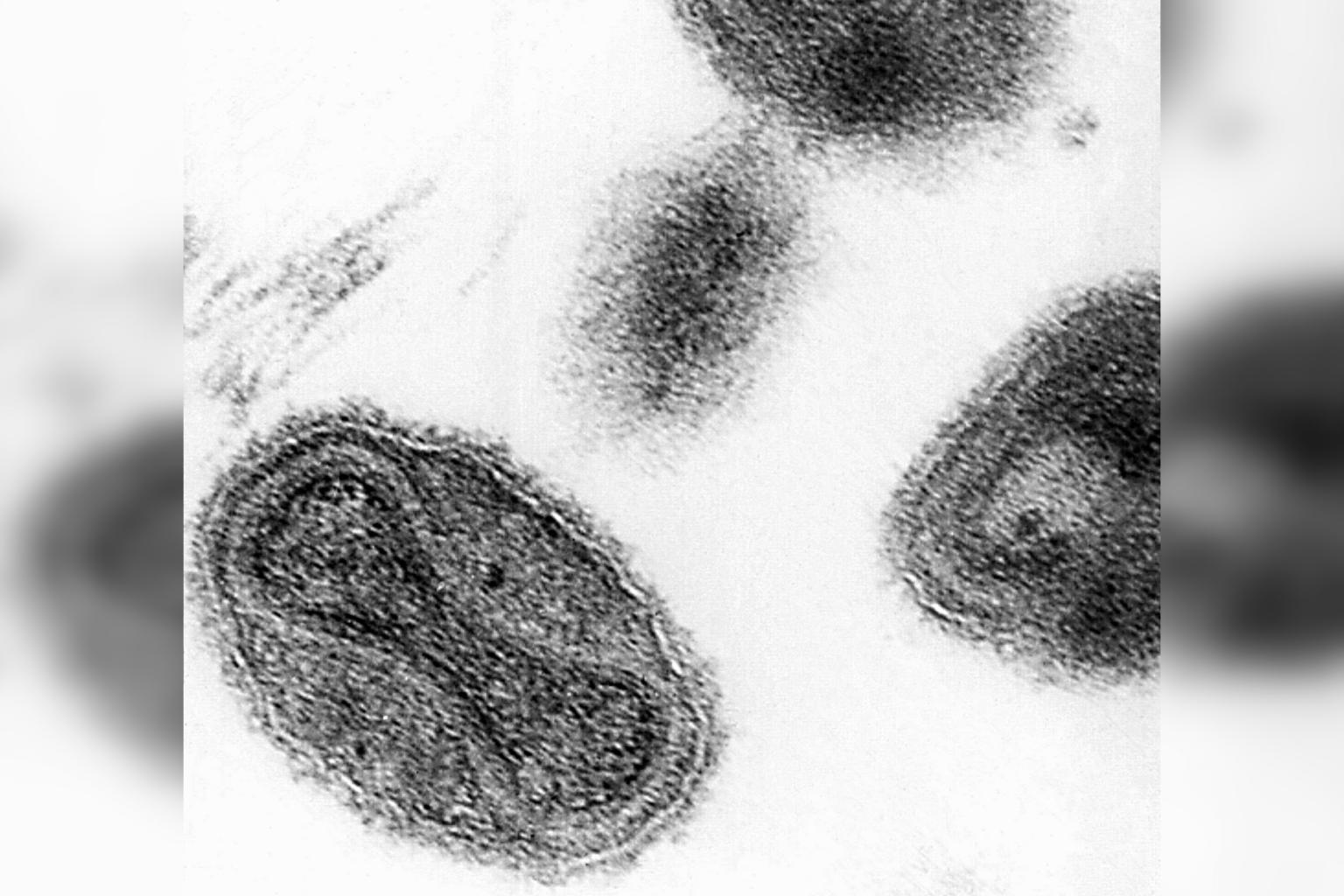Vials labelled 'smallpox' are found in Pennsylvania laboratory
Sign up now: Get ST's newsletters delivered to your inbox

An electron micrograph of the smallpox virus taken in 1975.
PHOTO: NYTIMES
Follow topic:
NEW YORK (NYTIMES) - The Centres for Disease Control and Prevention (CDC) is investigating the discovery of vials that are labelled "smallpox" at a laboratory in Pennsylvania, the health agency said Thursday (Nov 18).
The frozen vials "were incidentally discovered by a laboratory worker while cleaning out a freezer in a facility that conducts vaccine research in Pennsylvania," Ms Belsie Gonzalez, a spokesperson for the CDC, said in an email Thursday.
She added that the CDC was working with law enforcement officials to investigate the vials. The agency said the vials appeared to be intact.
"The laboratory worker who discovered the vials was wearing gloves and a face mask," she said. "There is no indication that anyone has been exposed to the small number of frozen vials. We will provide further details as they are available."
The CDC did not say where in Pennsylvania the vials were discovered or how many there were.
Mr Mark O'Neill, a press secretary for the Pennsylvania Department of Health, said there were a "small number of vials" found at a Merck facility in Montgomery County, outside Philadelphia.
Merck did not immediately respond to a request for comment Thursday. The FBI referred inquiries to the CDC.
"The Pennsylvania Department of Health would like to stress that there has been no known threat to public health and safety," Mr O'Neill said. "As referenced by the CDC, there is no indication that anyone was exposed to the small number of frozen vials that were labelled 'smallpox.'"
Citing a notification from the state's department of health, Ms Kelly Cofrancisco, a spokesperson for the Montgomery County Office of Communications, said there was a total of "15 questionable vials" with five labelled as "smallpox" and 10 as "vaccinia."
Smallpox, an infectious disease caused by the variola virus, caused devastating outbreaks for centuries, with about 3 of every 10 cases proving fatal, according to the CDC.
Symptoms include a very high fever and a blistering, progressive skin rash.
The virus claimed the lives of 300 million people in the 20th century, according to the World Health Organisation.
In the event of an outbreak, the CDC said, "there is enough smallpox vaccine to vaccinate every person in the United States."
The agency said that the last natural outbreak of smallpox in the United States was in 1949. The last known natural case was in Somalia in 1977, according to the WHO.
The WHO said that there were two authorised repositories of variola virus stocks, with the CDC in Atlanta and at a research centre in Russia.
That year, six glass vials that contained the smallpox virus were found in a storeroom in a government laboratory outside Washington. At the time, the CDC said there was no indication that lab workers or the public had been exposed to the contents.
The CDC said that smallpox research in the United States focused on the development of vaccines, drugs and diagnostic tests to protect people against smallpox in the event that it is used for bioterrorism.
Dr Robert Glatter, an emergency physician at Lenox Hill Hospital in New York, said that smallpox can be lethal "even after it is freeze-dried."
He said that because of its highly infectious nature, "the virus itself must be kept cold." At room temperature after many years, he said, it was "unlikely that the virus would retain any ability to infect people."
Dr Glatter added that there had been an ongoing debate about whether governments should retain viral samples or eliminate all known copies of the virus.

